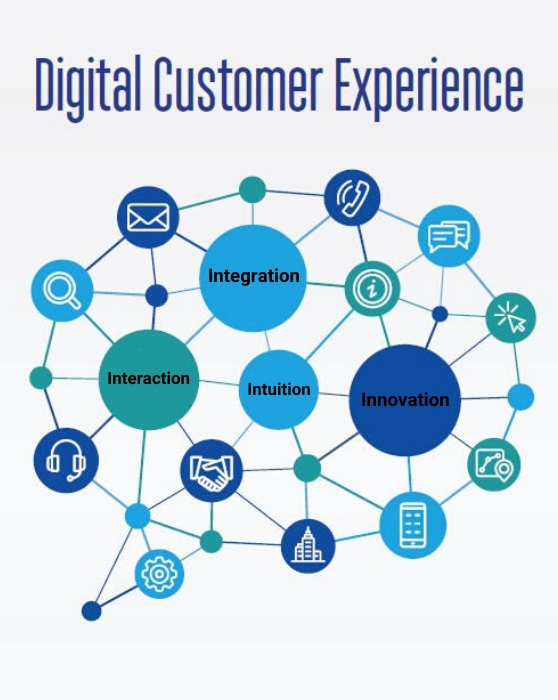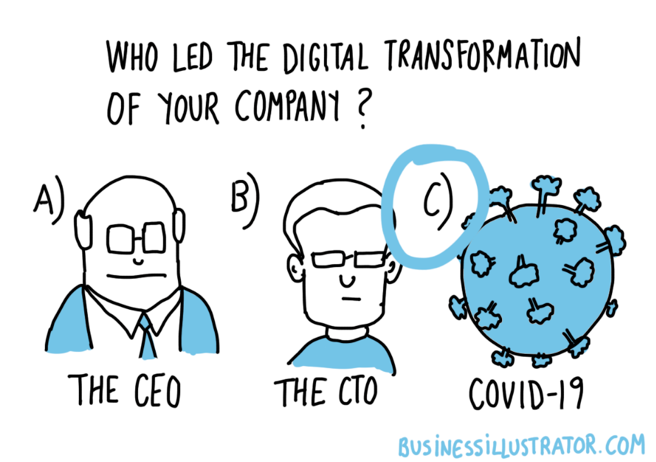

“Digital Transformation” is a term that's become increasingly popular in the business world. In short, it refers to the process of leveraging digital technologies to transform an organization’s operations. This article will explore what digital transformation is, its different applications, and how it can help your business succeed.
Unveiling the varied meanings and applications of ‘Digital’
Digital transformation means different things to different people. Some think of it as going paperless, while others associate it with data analytics, artificial intelligence, Agile teams, or open-plan offices. The term "digital" itself can encompass a wide range of meanings, from a set of technologies to a broad collection of beliefs about future work practices. This variation in interpretation leads to disagreements within organizations about who should be responsible for digital transformation and how much budget should be allocated to it.
Customer service approaches have been reshaped by digital transformation. The traditional model of waiting for customers to initiate contact has been revolutionized by the emergence of social media, where forward-thinking companies can engage with customers on their preferred platforms.
When the pandemic hit, retail giants like ‘Walmart’ and ‘Bed Bath & Beyond’ disrupted their store operations by swiftly transitioning to curbside delivery and other contactless options to ensure the safety of consumers while fulfilling their needs.
87% of senior business leaders say digitization is a top priority, and 91% of businesses participate in some type of digital initiative *
*Gartner
Simultaneously, IT leaders have reevaluated their strategic IT roadmaps, with many embracing cloud software for video collaboration and implementing machine learning solutions to optimize supply chain management and product flow.
While these individual implementations may not represent comprehensive transformations, the way these solutions are integrated provides a more accurate assessment of a company's digital fitness and reflects its business priorities.

Image Source: Comoroz
Understanding Digital Transformation
Digital transformation is about changing how businesses interact with customers by using technology to do so. It goes beyond sales, marketing, and customer service to reimagining how a business operates and engages customers.
During digital transformation, companies should often pause to assess if they are on the right track and ask themselves if they are doing the right things to meet changing customer expectations and if they need to develop new business models and revenue streams.
For traditional businesses, digital transformation may involve creating digital products like mobile apps or e-commerce platforms.
For small businesses, it's important to think, plan, and start with digital processes right from the beginning instead of trying to transform them later.
In essence, digital transformation is about embracing technology, adapting to customer demands, and finding new ways to generate value for the business.
How has the COVID-19 pandemic changed digital transformation?
The COVID-19 crisis has rapidly transformed both the priorities and approaches of companies' digital transformation efforts. With a significant portion of the workforce now working remotely, employee experience with digital technology has become essential for carrying out work effectively. Additionally, CIOs have recognized the importance of prioritizing practicality over perfection during this crisis, shifting focus from pursuing an ideal solution to prioritizing functional effectiveness.
The COVID-19 pandemic has accelerated digital transformation’s adoption in many ways, and here we name a few:
- Remote Work and Collaboration
It forced organizations worldwide to adopt remote work models quickly, resulting in a rapid increase in the use of digital collaboration tools, video conferencing platforms, and cloud-based productivity suites. This shift highlighted the importance of robust digital infrastructure and prompted organizations to invest in technologies that enable seamless remote collaboration.
- E-commerce and Digital Services
The pandemic triggered a significant surge in e-commerce as physical stores faced closures and restrictions. Businesses quickly adapted by enhancing their online presence, optimizing e-commerce platforms, and expanding their digital service offerings. This shift led to a wider acceptance of online shopping and digital transactions, fundamentally changing consumer behavior.

Image Source: Business Illustrator
- Healthcare and Telemedicine
The healthcare industry saw a rapid transformation with the adoption of telemedicine. Virtual consultations, remote patient monitoring, and digital health platforms became critical in delivering healthcare services while minimizing physical contact.
- Data Analytics and Predictive Modeling
The need to track and understand the spread of the virus led to an increased reliance on data analytics and predictive modeling to monitor the pandemic, identify hotspots, forecast resource needs, and develop targeted interventions.
- Cybersecurity and Privacy Concerns
As digital adoption surged, so did the risks associated with cybersecurity and privacy. With remote work, there was an increased focus on implementing secure remote access protocols and educating employees about potential threats.
Overall, the pandemic acted as a catalyst for embracing digital technologies at an accelerated pace. It highlighted the importance of agility, digital resilience, and the ability to adapt to rapidly changing circumstances. The lessons learned during this crisis are likely to have a lasting impact on the future of digital transformation.
The digital transformation market size is projected to grow at a compound annual growth rate of 19.1%, from $521.5 billion in 2021 to $127.5 billion in 2026 *
*Markets and Markets
How can you benefit from Digital Transformation?
Here are some ways businesses can benefit from digital transformation:
- Enhanced Efficiency and Productivity
Automate processes, streamline workflows, and optimize operations, leading to increased productivity, reduced errors, and cost savings.
- Improved Customer Experience
Enable businesses to deliver personalized, seamless, and convenient customer experiences across various touchpoints, fostering loyalty, satisfaction, and positive brand perception.
- Expanded Market Reach
Enable businesses to reach a wider audience, tap into new markets, and expand their customer base beyond geographical limitations.
- Data-Driven Insights
Generate vast amounts of data to gain insights into customer behavior, market trends, and operational performance, facilitating data-driven decision-making.
- Agility and Adaptability
Equip businesses with the agility to respond quickly to market changes, customer demands, and emerging trends, enabling them to stay competitive and seize new opportunities.
- Innovation and Growth
Encourage innovation, experimentation, and the development of new products, services, and business models, fostering growth and competitive advantage.
- Cost Optimization
Offer cost-effective alternatives to traditional processes, reducing operational expenses, improving resource allocation, and enabling flexible scaling of infrastructure and services.
Moreover, individuals can benefit from digital transformation through convenient daily activities such as online shopping, digital banking, remote access to services, as well as opening new opportunities such as remote work and online education.

Image Source: smartway2
Unlock new opportunities
Digital transformation is revolutionizing business operations and even giving rise to novel business models. It prompts organizations to reevaluate their entire spectrum of activities, encompassing internal systems and customer interactions across all channels. It compels companies to ask themselves: "Can we revamp our processes to enhance decision-making, unlock remarkable efficiencies, or deliver unparalleled customer experiences through personalized approaches?"
Digital transformation can take various routes, and the journey for each organization is distinct. However, in every instance, embarking on this journey necessitates adopting a fresh perspective, often beginning with the fundamentals.